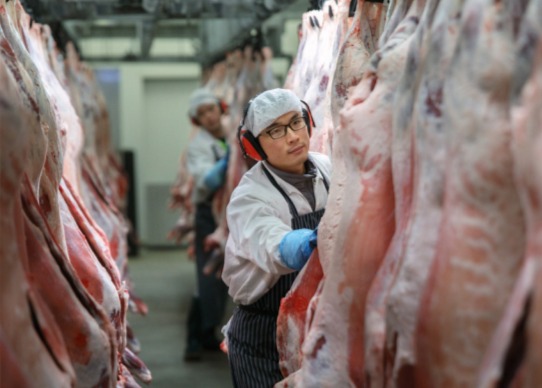 SOUTH Australia’s sheep meat and wool industry will need to increase the state flock by 13 percent to 12 million sheep by 2030 to achieve the goal of the updated South Australian Sheep Industry Blueprint launched last Friday.
SOUTH Australia’s sheep meat and wool industry will need to increase the state flock by 13 percent to 12 million sheep by 2030 to achieve the goal of the updated South Australian Sheep Industry Blueprint launched last Friday.
The Blueprint was launched at Meat & Livestock Australia’s MeatUp Forum in Gawler and it aims to build on the success and momentum of the 2015-2020 blueprint.
The industry generates $2 billion in annual gross state revenue with an estimated 5200 farm businesses in South Australia that support about 10.7 million sheep with farmgate production valued at $780 million.
South Australian sheep meat and wool were exported to more than 50 countries in 2019-20, with sales valued at nearly $650 million.
Blueprint Working Group chair said the group anticipated the South Australian sheep industry can grow by 50 percent to $3 billion per year by 2030.
The blueprint estimates this will require a 13pc increase in the state’s flock to more than 12 million over the coming decade, with an additional lamb per ewe lifetime and growth in gross value driven by improved product yields.
The blueprint sets out the priority areas of industry collaboration to achieve these goals over the next 10 years. The priority areas in the blueprint include supporting productivity with sustainable practices, promoting a responsive and resilient supply chain, fostering a growing skilled workforce and optimising market outcomes.
At the launch, Minister for Primary Industries and Regional Development David Basham said the South Australian Sheep Blueprint 2030 outlines ambitious objectives to increase revenue and grow the state’s sheep flock.
“The Marshall Liberal Government’s Growth State 2030 plan aims to increase primary industries revenue to $23 billion by 2030,” he said.
“To achieve this, South Australia’s gross state product must grow by three percent every year and the livestock industry will play a major role in reaching this target.
“By supporting development of the South Australian Sheep Industry Blueprint 2030, the State Government is investing in a united strategy for an uplift in productivity and ultimately greater profitability for farmers.”
Ms Kellock said the development of the 2030 iteration was led by key stakeholders along the supply chain.
“The new blueprint is an initiative compiled by industry, for industry, to support the whole value chain,” she said.
“The detail and directions outlined in the blueprint have been informed through extensive consultation with over 200 producers, organisations and industry representatives.
“The blueprint’s alignment with national and state priorities has engaged all facets of the value chain and highlights the key strategies and actions the industry will take to drive and secure the SA sheep industry as a leader.”
Major contributors to the development of the blueprint include Livestock SA and the Sheep Industry Fund, Fresh agenda, Department of Primary Industries and Regions (PIRSA)’s Red Meat and Wool Growth program and the SA Sheep Industry Blueprint Working Group.
A copy of the updated South Australian Sheep Industry Blueprint 2030 can be downloaded from the Livestock SA website.

To attract a young workforce the industry needs user-friendly Merinos. Gone are the days of the three big flaps on the neck with large squint glands at the base of their fibres that attract blowflies. We need highly blowfly-resistant Merinos as a benchmark to the South Australian ewe flock. Then, young people will return to the Merino/sheep industry with a meat and wool animal.